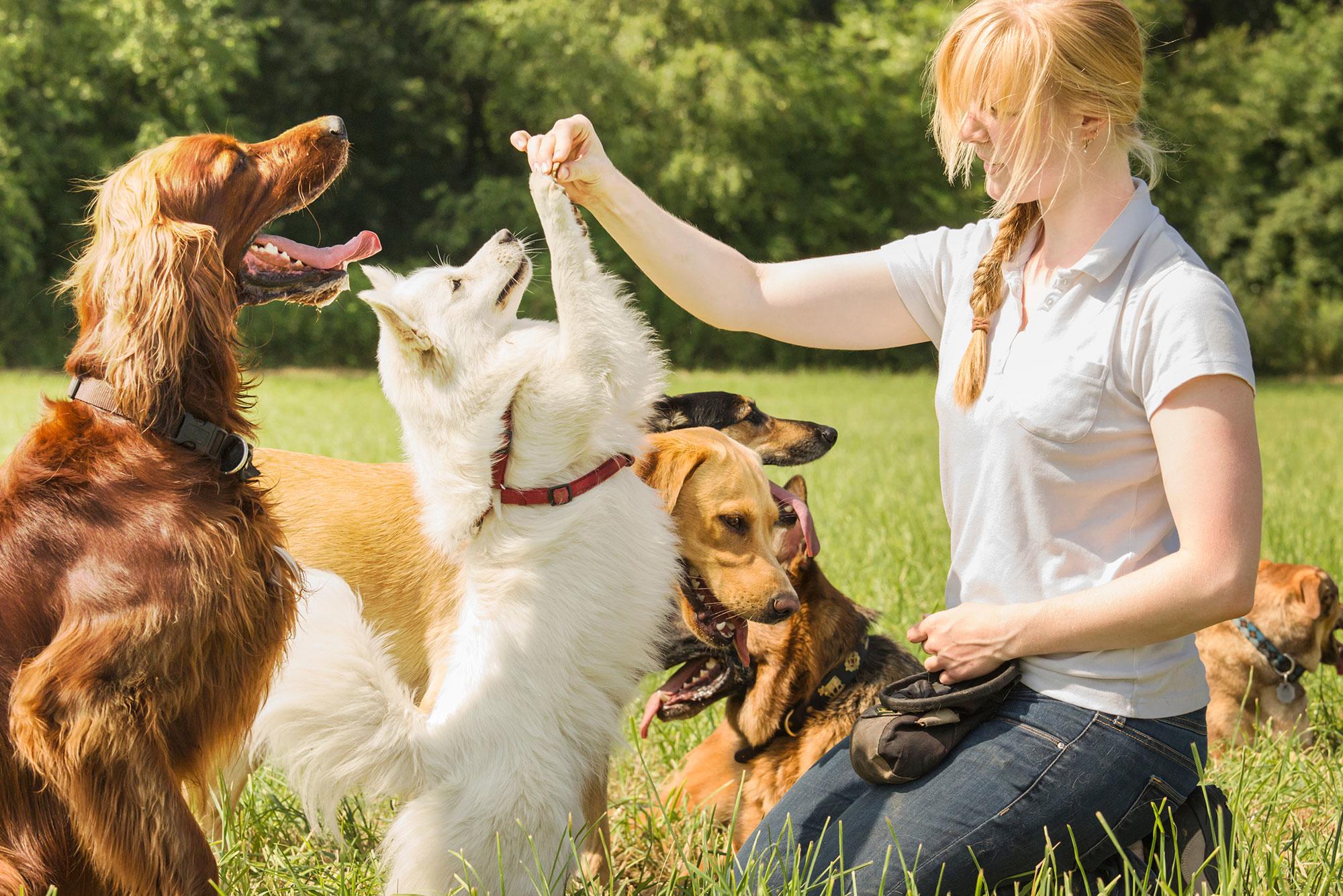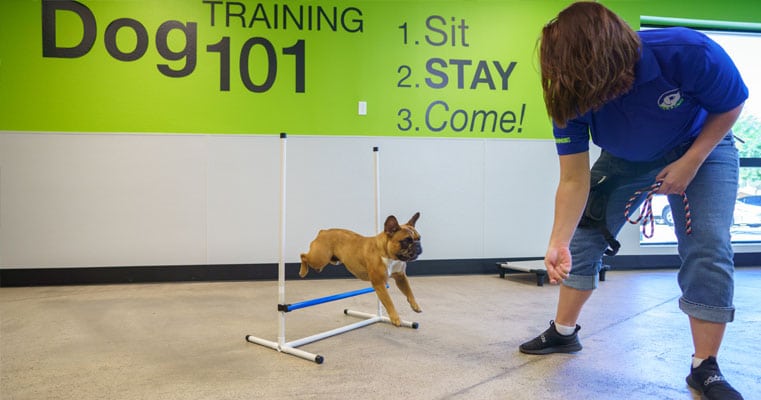Master Dog Training at Home with These Simple Techniques and Tools
Master Dog Training at Home with These Simple Techniques and Tools
Blog Article
Novice's Guide to Effective Canine Training in your home
Effectively educating a pet at home needs a nuanced understanding of canine actions and reliable interaction techniques. Developing clear training goals, using high-quality incentives, and keeping consistency throughout household participants are crucial components. Integrating training right into everyday regimens can boost both interaction and retention.
Recognizing Pet Dog Behavior
Understanding dog actions is important for effective training and fostering a harmonious relationship between human beings and their canine buddies. Dogs communicate largely via body language, articulations, and faces, making it important for proprietors to analyze these signals accurately. Recognizing habits such as tail wagging, growling, or cowering can supply insights into a pet dog's emotion and purposes.

Usual behavioral issues, such as hostility, stress and anxiety, or extreme barking, usually stem from misunderstandings or unmet demands. Observing and addressing these issues promptly can prevent acceleration and ensure a favorable training experience. By cultivating a deep understanding of pet dog actions, owners can tailor their training methods to fit their canine companions, inevitably leading to a contented and well-behaved family pet.
Vital Training Devices
A fully equipped training room can significantly boost the effectiveness of canine training in your home. Vital training tools make certain that both the trainer and the pet can take part in effective sessions that promote knowing and bonding.

Purchasing a tough leash and a comfy, well-fitting collar or harness is crucial for safety and control. These tools assist establish limits and make sure the pet stays secure throughout training. In addition, a marked training location, cost-free from diversions, aids concentration for both the fitness instructor and the dog.
Training aids such as training pads, cones, or agility devices can additionally enhance the experience by presenting selection and challenges. Having a note pad or digital app for tracking progression can be indispensable, enabling you to keep in mind successes and areas for enhancement. Utilizing these important tools will certainly develop a positive training atmosphere and lay the structure for efficient discovering.
Producing an Educating Routine
Developing a constant training routine is crucial for efficient pet dog training in the house. A well-structured routine not just aids in try this web-site strengthening wanted actions but additionally supplies your pet dog with a sense of protection and predictability. To produce a reliable training regular, start by determining certain training goals, such as basic commands, leash strolling, or house-training.
Choose a marked time each day for training sessions, ideally when your dog is sharp and responsive. Procedure needs to be brief, about 5 to 15 minutes, to keep emphasis and protect against exhaustion. Consistency in timing and environment will certainly enhance your pet dog's discovering experience.
Incorporate training right into day-to-day tasks to enhance abilities. As an example, method commands throughout walks or nourishment, which integrates discovering right into all-natural regimens. Additionally, continue to be adaptable and adjust the routine as essential, accommodating your pet's power levels and mood.
Favorable Support Strategies
Favorable support techniques are fundamental to efficient pet dog training, promoting wanted actions through benefits instead of punishment. This technique utilizes favorable stimuli, such as deals with, appreciation, or play, to motivate pet dogs to duplicate details actions. The foundation of this approach is timing; incentives need to be given instantly complying with the wanted habits to develop a clear association.
When carrying out favorable support, it is vital to select rewards that are motivating for your canine. High-value deals with, such as tiny pieces of poultry or cheese, can be specifically efficient throughout training sessions. In addition, differing the benefits can maintain your dog's passion and excitement.
Beginning with basic commands, like "sit" or "stay," and progressively progression to much more complex tasks. Uniformity is essential; make sure that all family members use the exact same commands and benefit systems to avoid confusion.
Moreover, it is important to remain individual and prevent frustration. Dogs, like people, learn at their very own speed. By promoting a helpful training setting with positive support, you can boost your dog's knowing experience while reinforcing the bond in between you and your furry companion, preparing for successful training outcomes.
Typical Educating Challenges
While training a pet dog in the house can be a fulfilling experience, it often comes with a set of common challenges that can check both perseverance and uniformity. One widespread problem is disturbance. Pet dogs may end up being easily averted by sounds, motions, or perhaps fragrances in their setting, making it tough to keep their Website focus during training sessions.
An additional difficulty is incongruity in commands and support. If family members utilize various hints or rewards, it can confuse the dog and prevent progression. Developing a unified technique is important for efficient interaction.
Additionally, dogs can experience disappointment or anxiety, particularly if they do not comprehend what is anticipated of them. This can result in unwanted habits, such as eating or barking.
Finally, the timing of reinforcement is vital (Dog training). Delayed rewards can decrease the efficiency of favorable reinforcement, as dogs might stop working to connect the habits with the reward
Conquering these challenges needs dedication, clear interaction, and an organized training strategy. Acknowledging and attending to these common barriers will lead the way for a more pleasurable and effective training experience in your home.
Final Thought
In verdict, successful pet dog training at home necessitates a comprehensive understanding of canine behavior and effective interaction approaches. By developing clear training objectives and using high-quality treats alongside favorable support, the training procedure becomes much more fulfilling for both the pet dog and the trainer.
Developing a regular training routine is important for effective pet dog training at home.Positive reinforcement strategies are fundamental to reliable pet dog training, promoting desired habits with rewards instead than penalty (Dog training). By fostering a helpful training atmosphere via positive support, you can enhance your pet's understanding experience while enhancing the bond between you and your fuzzy buddy, laying the foundation for successful training results
In final thought, effective canine training at my company home requires an extensive understanding of canine actions and effective communication strategies. By developing clear training goals and utilizing premium treats alongside favorable support, the training procedure ends up being much more satisfying for both the dog and the trainer.
Report this page